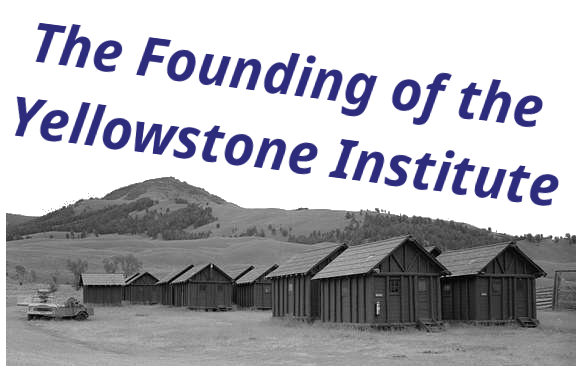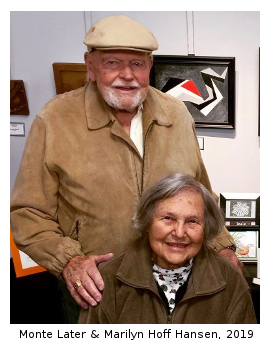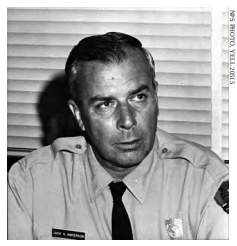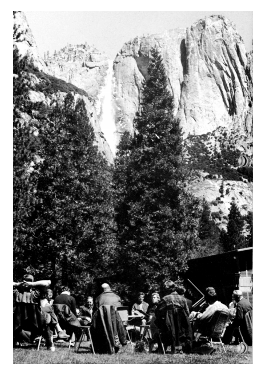Monte Later's story, 1972 - 1976 : Part 1: Centennial Part 2: The Yellowstone Institute Part 3: The Yellowstone Institute - Beginnings
Al Mebane's story, 1972 - 1982 : Recollections from the '70s
Additional History Links : History Links

The Founding of the Yellowstone Institute:
Excerpts from "Getting Here" written by This email address is being protected from spambots. You need JavaScript enabled to view it., illustrated by Marilyn Hoff Hansen
Part 1: Centennial
 By Monte Later (This email address is being protected from spambots. You need JavaScript enabled to view it.):
By Monte Later (This email address is being protected from spambots. You need JavaScript enabled to view it.):
You had to look up to see it, head back so far you may tip backward. It snowed last night but just up high. Yosemite's soaring walls, the top third, were plastered with wet, late April snow. The early morning sun was just beginning to touch the highest places. Except where a few wispy fragments of last night's clouds cast shadows as they drifted to oblivion, the new snow was the white of a snowy egret. Below snow line the towering walls, usually a somber gray, now something between heavy dew and light mist. Now the first light, glorious sun, breathed life into the dampness while mists freshened both air and light.
Others were converging now, toward the same doorway I approached. None of us knew what experience, new for each of us, lay behond the door. Three steps up, on each side, there was a bed of freshly tilled soil surrounded by fragile twine supported on flimsy twelve inch wooden sticks. On the small wooden sign, just inside the twine, the expected words would be; “KEEP OFF”, “STAY OUT”, “NO ENTRY” or some other negative message Instead, the sign said “NEW PLANTINGS, PLEASE”. I hoped this surprising sign foretold the nature of the discussions we would have here.
We are here, one hundred and fifty of us, to creatively gaze into the next one hundred year future of the idea of National Parks. Beyond that there is no pre-written agenda. No idea will be considered too outside the box for consideration because that's where fresh, unique ideas are likely to be found. This, 1972, is the centennial anniversary of the National Parks idea and of the establishment of Yellowstone National Park, the world's first. Later this year, a Russian delegate to the World Conference on National Parks at Old Faithful, would congratulate Yellowstone on being America's first National Park, implying that the USSR was first for that too.

Here in Yosemite, the one hundred and fifty delegates were selected from across the nation and each had some interest or connection to the Parks idea. Jack Anderson (at right), Yellowstone Superintendent, has invited me to represent Yellowstone. Randomly divided, we met in discussion, think tank groups of twenty five or so for four hours then we were re-mixed to be with a new group. An impressive array of recording equipment was installed in each room. After the three days of sessions, information gathered would be transcribed, edited and published in book form.
A man, unfamiliar to me, stood just outside the door as I exited the first morning session. His eyes immediately riveted on mine and he trapped me with the surest of any bait, a compliment. By the arm, he led me to the nearest corner. Friendly and a bit stocky, the man was impeccably dressed in a crisp business suit, a novelty in Yosemite. He was one of those people on whom your eyes lock when you are speaking to a group.
He spoke politely but earnestly, “We're all here to envision what our Parks should be as we begin the second one hundred years. You and the others living here in the west are blessed. You live on the doorsteps of our country's most beautiful and numerous National Parks. Those Parks are in your lives. You have access.”
“Your point is well taken,” I said. “This is a blessing and one of which we should be reminded lest we begin to take it for granted. Have you ever visited Yellowstone?”
Without answering the question he said, “My home is in Philadelphia.” Then, becoming more serious, “My people are born, live and die, often without ever going more than six city blocks from their beginning and ending. What shall we tell them of our great National Parks? What is their right of access?”
My new friend was a black man but it was clear that when he spoke of “My People' it was not of a state of race but of a state of conditions and opportunities.
This man, whose name I can't recall, was giving me a special gift, the rare gift of seeing my own comments through his eyes, more important, through the eyes of 'His People'.
After our conversation in the corner, I never did see the man from Philadelphia again, but the conversation stayed with me. Of the copious notes in a folder I brought here there may be no more than one or two I now felt may be relevant. Though I didn't see it, this man must have talked to some others at the event because the dominant topic for each of my discussion groups was access, access for everyone. Interesting ideas popped up. A novel one was to issue 'Park Stamps' like 'Food Stamps' to leverage funds for those with limited resources. Virtual experiences were discussed at length. Could a virtual experience be created for specific Parks that could be taken to the people? For those who can't come to the Parks, bring the Parks to them. Virtual technologies were considered and seemed doable, but remember, this was 1972, before today's amazing virtual technologies were available.
Expanding volume of automobile traffic at the time seemed to be taking over the Parks. Novel ideas were considered, most of which involved enhanced public transportation. Think about a monorail system in Yellowstone! Yosemite was a leader. They had already closed the upper end of the narrow valley to auto traffic. A quiet natural gas powered multi-car, rubber tired trolley ran every ten minutes accessing the upper part of the valley. Before, that beautiful section was riotous with noise and congestion. Everyone was angry as they competed for scarce parking. Yosemite was giving us a graphic view into the future.
“Wow, look over here.” An excited voice beckoned as we entered the room assigned for this first day's afternoon session. Large windows framed a spectacular view of Yosemite Falls draped with this morning's new snow, vaporous clouds and patches of brilliant sunlight. Impossible to look away. Impossible to get to our work.
“Give us fifteen minutes. We're moving the recording equipment out onto the patio,” said our sound tech.
 An adjacent outdoor stone patio was right under the otherworldly scene. If our group didn't come up with something good it wasn't for lack of inspiration.
An adjacent outdoor stone patio was right under the otherworldly scene. If our group didn't come up with something good it wasn't for lack of inspiration.
The provided ID badge was both blessing and curse. In bold letters it read “YELLOWSTONE'. While it may have attracted more attention than sought or desired, it did help meet some remarkable people and led to the one idea that was to make this entire experience worth the trip.
I am writing this forty one years later, nearly halfway into the second century of National Parks we were trying to envision. Were any ideas generated here that have made a difference? Difficult to say for certain. Once scattered, which of the seeds germinated and took root? Our National Parks are significantly different than they were in 1972. Many of the troubling problems of that year have been dealt with. New technologies have opened new opportunities. Projected rates of demand and visitor numbers have not grown as rapidly as frightening straight line projections foretold then.
What of the man from Philadelphia and 'His People'? Do we have greater right of access for all of America's people? Unfortunately, I see no improvement or movement in that direction. Is there an answer? I'm optimistic. What about sponsored tours for less privileged young people? That's doable. What finer contribution to their education. Things like that could happen. Why does it take so long? I wonder if the man from Philadelphia is still living.
Had I been allowed to select but one idea here at Yosemite to take back to Yellowstone it would, without a doubt, be 'The Yellowstone Institute'. The Yosemite Institute hosted a reception on an outdoor patio. That Institute's Director told me how the Park and surrounding communities were interfacing for education. Primary grades through junior colleges were cooperating with Yosemite and it's staff to offer special learning opportunities.
Why not a Yellowstone Institute? Yellowstone is remote and has seasonal difficulties but it is world famous and has visitors who want to learn. A Yellowstone Institute should be a natural that would take off immediately. Not so! Today the Yellowstone Institute has blossomed beyond the wildest dreams we had back then, but the road was long and rocky. But that's another story. Next -->
Monte Later's story, 1972 - 1976 : Part 1: Centennial Part 2: The Yellowstone Institute Part 3: The Yellowstone Institute - Beginnings
Al Mebane's story, 1972 - 1982 : Recollections from the '70s
Additional History Links : History Links


